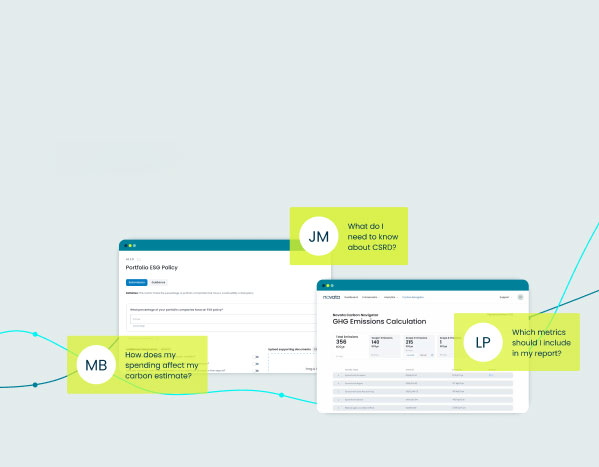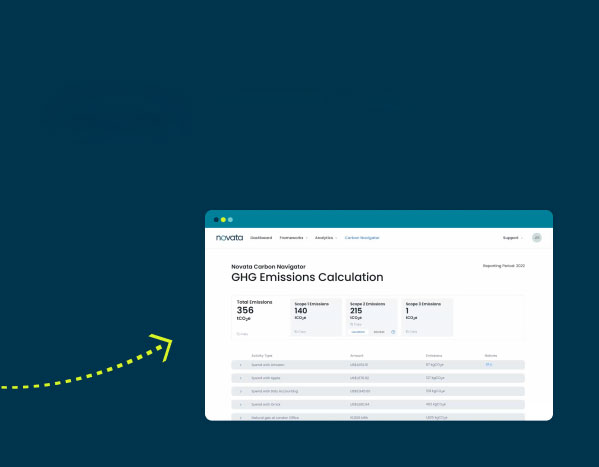Driven by rising scrutiny from regulators, investors, and other stakeholders, private equity firms are refining their ESG strategies. In private markets, a focus on these environmental, social, and governance factors is a differentiator for general partners (GPs) interested in attracting limited partner (LP) investments and building sustainable companies.
According to PwC’s Global Private Equity Survey, 65% of private equity firms have an ESG or responsible investing policy and the tools to implement it. Although firms are moving quickly to incorporate these considerations, knowing where and how to start can still be a challenge.
At Novata’s recent webinar, “How to Build an ESG Strategy for Private Equity,” three experts addressed the challenges and opportunities for GPs. Moderated by Sarah Green-Vieux, Novata’s Head of ESG Education and Research, the discussion included Sanaz Raczynski, Managing Director of Sustainability at Kohlberg; Candice Richards, ESG/Compliance Officer and Managing Director at MidOcean Partners; and Ravali Parsa, Director of Investor Relations at Aurora Capital Partners.
The panelists shared insight into what GPs need to know to build an ESG strategy authentic to your firm, as well as how to secure firm-wide buy-in on the approach. Below are four best practices to keep in mind to help you create or refine your ESG strategy.
1. Conduct a self-assessment
According to Ravali, any private equity firm’s ESG strategy should begin with assessing current practices to get a baseline picture. Some questions to ask include:
- Do you have a written ESG or responsible investing policy?
- Do you conduct ESG due diligence on all potential investments?
- Do you set ESG goals for your platforms and how to track metrics?
- Do you currently provide ESG reporting to your LPs?
Answering these questions will provide insight into what policies and practices can be built upon as well as potential blind spots. This, in turn, will help you determine your starting point for your strategy.
2. Set intentions for applying ESG at different stages
Applying an ESG lens across different stages of the investment lifecycle can provide valuable insights to inform investment decisions. But it is important to understand how ESG can provide value at each stage. Sanaz, for instance, considers ESG criteria during the pre-acquisition phase to help with risk evaluation and valuation. These include issues such as the impacts of climate change, as well as changing regulatory requirements and customer preferences. Post-acquisition, Sanaz uses ESG as a lever to create opportunities to drive financial value, such as improving operational efficiency, lowering energy usage, or creating a more inclusive culture to reduce employee turnover.
3. Prioritize ESG education
In a 2021 PwC survey, 56% of PE firms said that more than half of their investment team had received some formal ESG training. Internal education around ESG is critical when building your strategy, particularly as knowledge gaps exist around this quickly evolving space. Candice noted that while the “ESG” acronym may be new, risk mitigation is not. For instance, concerns such as company treatment of employees, history of litigations, or environmental impact, all fall under the ESG umbrella and affect acquisition decisions. Raising awareness around what ESG entails and demonstrating to deal and management teams how existing firm practices align with ESG will help build firm-wide consensus.
4. Communicate proactively with LPs
LP requests for ESG data are on the rise, and while responding to each request can take time, open and proactive communication can help manage the increasing demand. For example, at Aurora, Ravali publishes ESG reports quarterly, schedules check-ins with LPs, and standardizes the information she shares when possible. Additionally, panelists recommended communicating the firm’s ESG strategy with LPs and engaging with them when metrics may be difficult or irrelevant to track.
Build Your ESG Strategy With Novata
An ESG strategy is necessary for GPs to remain competitive in today’s market, but building it takes time. Your firm’s ESG strategy will ultimately depend on your firm’s unique set of values and level of ambition on addressing material issues. As you begin the process, these considerations will help you take the first steps. For more insights, watch the full webinar here and reach out to us to learn more about how Novata can help you along your ESG journey.






